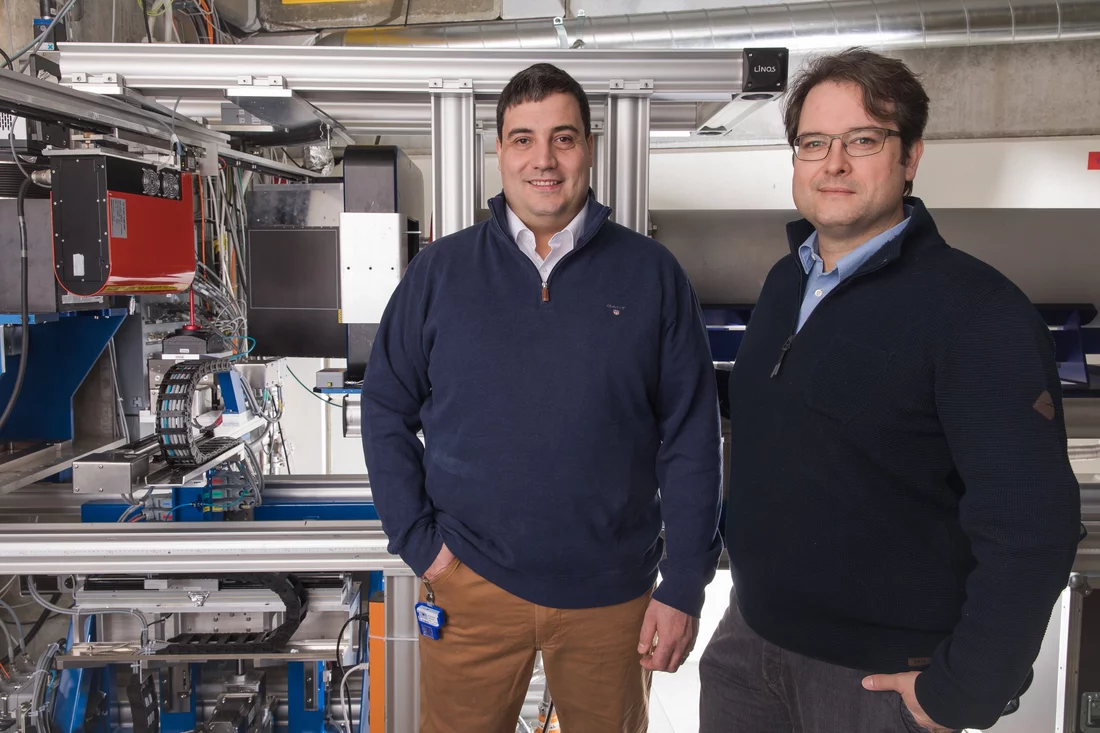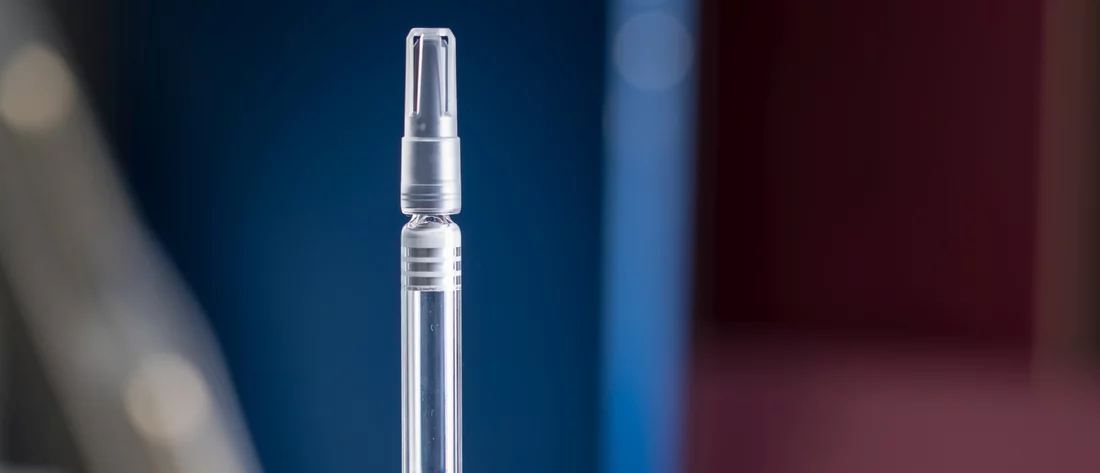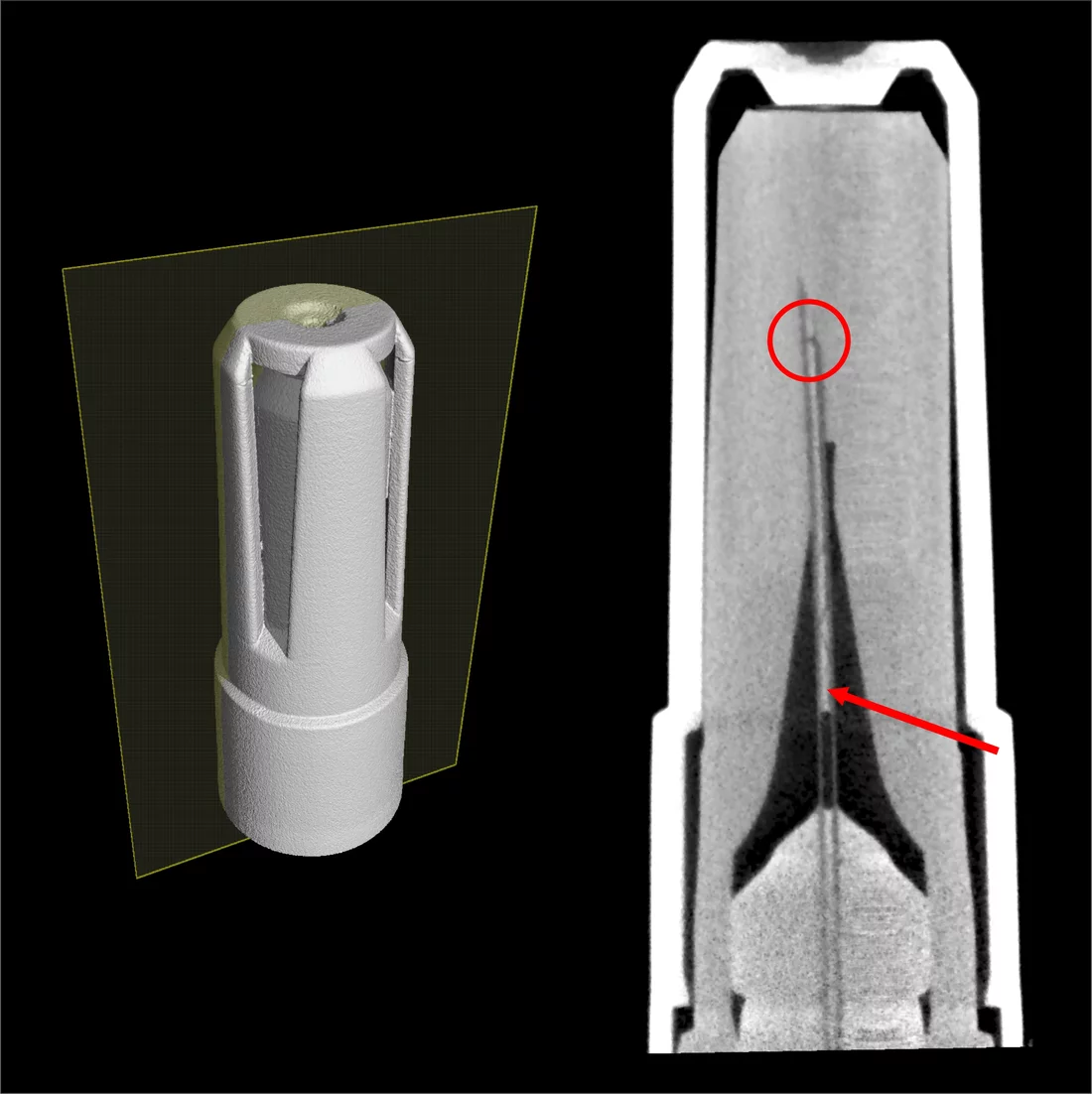PSI researchers help to understand why in pre-filled syringes, liquid medication can enter the needle inadvertently
Researchers from the Paul Scherrer Institute PSI, the University of Basel and the company F. Hoffmann-La Roche have found out why proper storage is crucial for syringes which are pre-filled with a liquid medication. Thanks to the special, well established neutron imaging capability at PSI, it's clear: The liquid medication can inadvertently get from the syringe cylinder into the metal needle prior to administration when the pre-filled syringe is stored at adversely high temperatures. The research results have been published in the scientific journal European Journal of Pharmaceutics and Biopharmaceutics.
Pre-filled syringes with staked-in needles are a popular option enabling patients to give themselves injections at home. These syringes are already filled with the liquid medication and commonly need to be kept cool. Depending on several conditions (the water vapour permeability of the needle's protective shield, the temperature history and the long-term storage condition), it is possible for the injection needle to become clogged. In order to better understand this phenomenon and minimise it in the long run, researchers from the Paul Scherrer Institute PSI, the University of Basel and the company F. Hoffmann-La Roche jointly sought to determine under which conditions the liquid medication inadvertently enters the injection needle. Their research results show that the storage conditions of the pre-filled syringes are truly crucial.
Neutrons allow to look inside the metal needle
For their studies, the researchers used imaging by means of neutrons, which apart from PSI is only available at a few research institutions worldwide. Neutrons are optimally suited for this problem
, explains PSI researcher Christian Grünzweig, because they penetrate the metal needle almost unimpeded but are deflected from their straight path by hydrogen atoms as they occur, for example, in water. Therefore, the hydrogen contained in the medical formulation serves as a contrast agent for the neutron image. So if some of the liquid medication gets into the metal injection needle, we can make it visible with the neutrons.
The measurement for each neutron image lasted only a little more than one minute per syringe. We were thus able to examine a representative number of syringes: 60 in total
, says Grünzweig.
In addition, the researchers also produced a three-dimensional tomographic image of a clogged syringe. To do this, they captured many neutron images of the same syringe from different angles and afterwards, on the computer, put them together digitally. It took 20 hours to record the tomography data. The resulting image shows clearly that slanting cracks run through the material inside the needle. That the course of these cracks is crooked and jagged can only mean that the plug in the needle is solid – that in this case the liquid portion actually has evaporated
, explains David Mannes, who is a researcher together with Grünzweig at PSI.
Storage conditions for pre-filled needles are crucial
The researchers' results show clearly that cool storage is crucial to prevent liquid entering the needle inadvertently. Out of a total of 60 pre-filled syringes, the researchers had stored half of them properly at five degrees Celsius for ten days; the other half, in contrast, had been stored for 72 hours at 40 degrees Celsius. In none of the 30 syringes that had been kept cool did the neutron images show medicinal substance inside the needle. In contrast, the neutrons revealed that in 28 of the 30 warm-stored syringes, the medicinal liquid had completely or partially intruded into the needle.
The process leading to the clogging involves that under adverse storage conditions, a small part of the liquid medication gets into the hollow needle, which has an inner diameter of only 0.2 millimetres and is pristinely filled only with air. The liquid portion of the drug solution can then slowly evaporate through the needle's protective shield when using a needle shield with high water vapour permeability. The solutes of the medication then remain behind as a solid plug
, explains Thomas Jung, who is a researcher both at PSI and at University of Basel.
This study has once again demonstrated that neutron imaging is a powerful tool. The technique has furthered the understanding of needle clogging phenomena. It thus contributes to the future development and the reliable use of pre filled syringes as drug containers.
Contact
Additional information
Original Publication
-
De Bardi M, Müller R, Grünzweig C, Mannes D, Rigollet M, Bamberg F, et al.
Clogging in staked-in needle pre-filled syringes (SIN-PFS): influence of water vapor transmission through the needle shield
European Journal of Pharmaceutics and Biopharmaceutics. 2018; 127: 104-111. https://doi.org/10.1016/j.ejpb.2018.02.016
DORA PSI -
De Bardi M, Müller R, Grünzweig C, Mannes D, Boillat P, Rigollet M, et al.
On the needle clogging of staked-in-needle pre-filled syringes: mechanism of liquid entering the needle and solidification process
European Journal of Pharmaceutics and Biopharmaceutics. 2018; 128: 272-281. https://doi.org/10.1016/j.ejpb.2018.05.006
DORA PSI
About PSI
The Paul Scherrer Institute PSI develops, builds and operates large, complex research facilities and makes them available to the national and international research community. The institute's own key research priorities are in the fields of future technologies, energy and climate, health innovation and fundamentals of nature. PSI is committed to the training of future generations. Therefore about one quarter of our staff are post-docs, post-graduates or apprentices. Altogether PSI employs 2300 people, thus being the largest research institute in Switzerland. The annual budget amounts to approximately CHF 460 million. PSI is part of the ETH Domain, with the other members being the two Swiss Federal Institutes of Technology, ETH Zurich and EPFL Lausanne, as well as Eawag (Swiss Federal Institute of Aquatic Science and Technology), Empa (Swiss Federal Laboratories for Materials Science and Technology) and WSL (Swiss Federal Institute for Forest, Snow and Landscape Research). (Last updated in June 2024)



